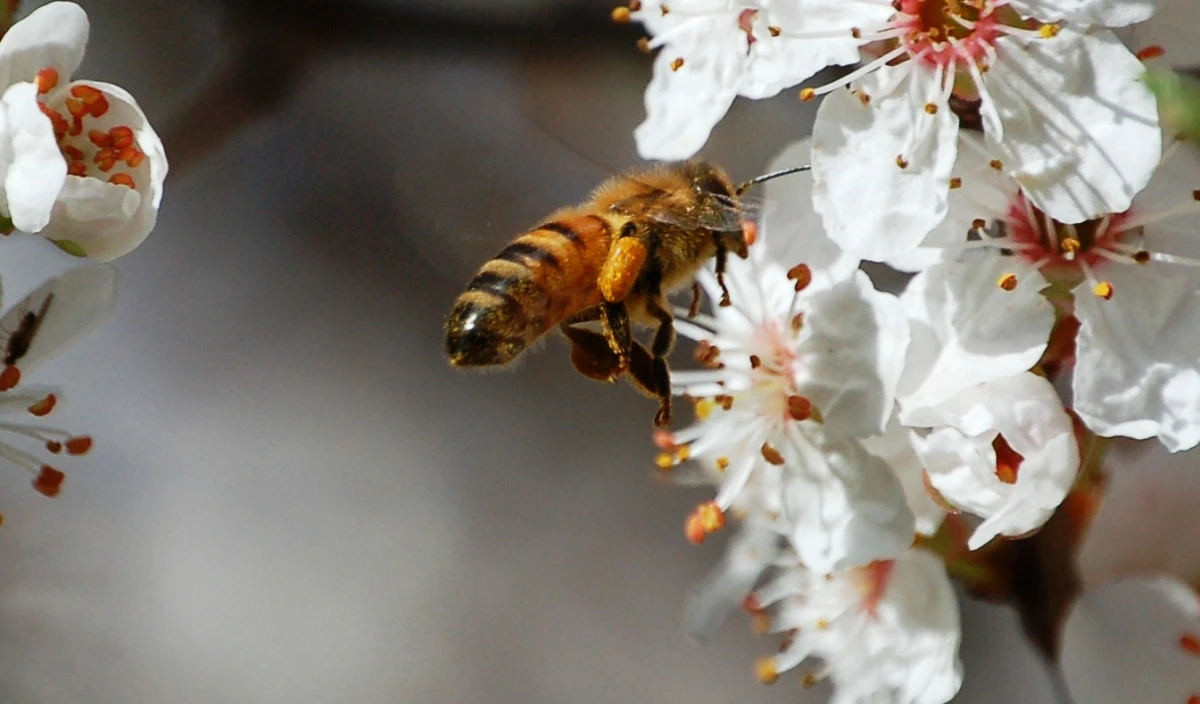Solve problems in and around your home.
Start Problem Solver

Honey bees are beneficial insects, pollinating many of our crops. However, they can sting and if nests are in inappropriate places they may have to be removed.
Bees are Beneficial Insects; they pollinate our fruit crops, other flowering crops, the flowers in the garden and of course they make honey.
There are several groups of bee; Honey Bees (Apis mellifera), Solitary Bees and Bumble Bees.
Honeybees can form colonies of tens of thousands. The honeybee is not normally a pest, producing the honey for our morning toast and pollinating our crops and flowers. These bees are usually cared for by beekeepers. However, wild colonies, or swarms that leave a hive to start a new colony can cause considerable consternation to those whose building they may choose as temporary accommodation or new home.
Honeybees have a painful sting to which some people have a bad reaction. The bee sting is barbed and will stick in human skin when the bee flies off, or is brushed off. The sting will continue to pump poison and should be scraped out with a fingernail and not pinched out. Pinching the sting will pump the venom into the skin. The sting also releases a pheromone (smell) that attracts other bees to the sting site and induces them to sting also. It is therefore good advice to retreat calmly from a colony of bees if stung once.
Honey Bee Swarms
Note: Honey bees are generally not aggressive while swarming. Great care should be taken in treating the entrance to a nest as there is a risk of being stung. It may be advisable to do this operation at night when there is no wasp or bee activity.
Nests
Note: The problems caused by honey bee colonies that have had time to build a nest are not likely to be solved using insecticide alone because the honey store in the nest will continue to attract bees and wasps. The honey store must be removed or sealed up following destruction of the colony.
THE QUEEN - In normal circumstances there is just one queen in a colony. In her mating flight she may mate with 7-10 drones (the males). Her sole task is to lay eggs in the hive, up to 2000 per day. She does not forage for food but is fed by the sterile (female) worker bees. The queen produces pheromones which keep the hive in order. Should she die, several new queens will be produced by the nurse bees feeding royal jelly to very young larvae. This enables the larva to develop ovaries and be sexually functional. The first queen to emerge will seek out other queen cells and kill them to maintain a single queen hierarchy.
DRONES - Males are haploid, having only one set of chromosomes as they develop from unfertilized eggs. Their sole purpose is mating with a queen. They don’t collect nectar or pollen, are fed by nurse bees and die after mating. Once the queen is established in the hive the drones are no longer fed, they die and are removed from the hive.
WORKERS - Worker bees are sterile females. They live for about 42 days and their duties change as they get older. Duties of the worker bee throughout her life may include cleaning, nursing and feeding larvae, transferring nectar from foraging bees to brood, making wax for brood chambers, and honey storage, guarding the nest and foraging for food. Workers travel about 4-5km to forage for food.
STINGS - Bees use their sting to protect their hive, it is a defence reaction for them. The bee’s sting has barbs which prevents it from being pulled out of your skin. As the bee walks away it rips the tip off its abdomen and will die soon after (see gallery images). When removing the sting and poison sac from skin, do not squeeze it by trying to pull it out with your finger. Use a finger nail of sharp edge to scrape it out.
Information courtesy of Dr John McLean
The scientific Latin name of European honey bees is - Apis mellifera